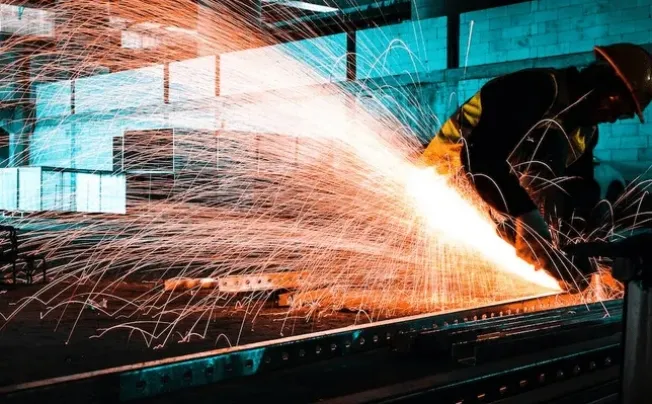9 Main Methods for Cutting Stainless Steel Plates
Cutting stainless steel sheets and plates can be a bit challenging, as it is a hard and durable metal material. However, several methods can be used to cut stainless steel sheet metal, depending on the tools and equipment available. Here are some common methods:
1. Snips
Aviation snips, or tin snips, are handheld tools designed specifically for cutting stainless steel sheets below 0.9mm. They come in various types, such as straight-cut, left-cut, and right-cut snips, depending on the direction of the cut.
2. Nibblers
Nibblers are hand-operated tools that use a punch-and-die mechanism to cut through sheet metal below 1mm. They are capable of making intricate cuts and curves.
3. Cutting Shearing
Cutting shears are also tools that can be used to cut thin stainless steel sheets. It can be divided into bench shear and hand shear. They work by applying pressure along a straight line to cut through the metal.
However, not only due to the limitations regarding the length but also due to the burr that occurs, sheared strips are not applicable for laser welding profiles.
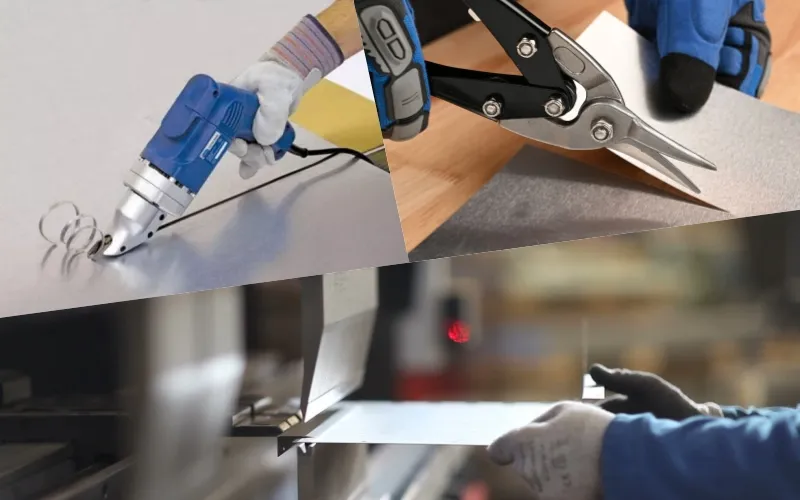
4. Saw Cutting
Saw cutting is a traditional method that has advanced in capability and precision as machine technology has developed. Saw cutting often has the following three main ways:
1. Circular Saw: a circular saw with a carbide-tipped blade and cutting disc designed for metal can be used to cut through thick stainless steel plates. This method is best suited for straight cuts, and the use of a clamp or jig can help ensure accurate cuts. After cutting, a file, or grinder, can be used to smooth off the cut and remove any metal slivers.
2. Bandsaw Cutting: bandsaw machines equipped with high-quality bi-metal or carbide-tipped blades can also be used to cut through thick stainless steel plates. It offers versatility and is suitable for straight or curved cuts. Nowadays, some manufacturers use variable-speed band saws to cut a broad range of sheet thicknesses. Hydraulic motors and CNC technologies add control and excellent repeatability to powerful sawing capabilities.
3. Cut-Off Saw: a small handheld tool called a cut-off saw will also do the trick when cutting through thinner pieces of stainless steel. Many people like to use the pneumatic cut-off saw, because of the added power through the air pressure. But when working with this saw, it is important to use a full face shield, as small pieces of metal can fly around.
In a word, for thicknesses up to around 650 millimeters, saw cutting presents a low-cost method. They also have the advantage of introducing minimal heat into the material to avoid distortion. Saw cutting is appropriate when the limitations of long sheet lengths and wider tolerance are no concerns.
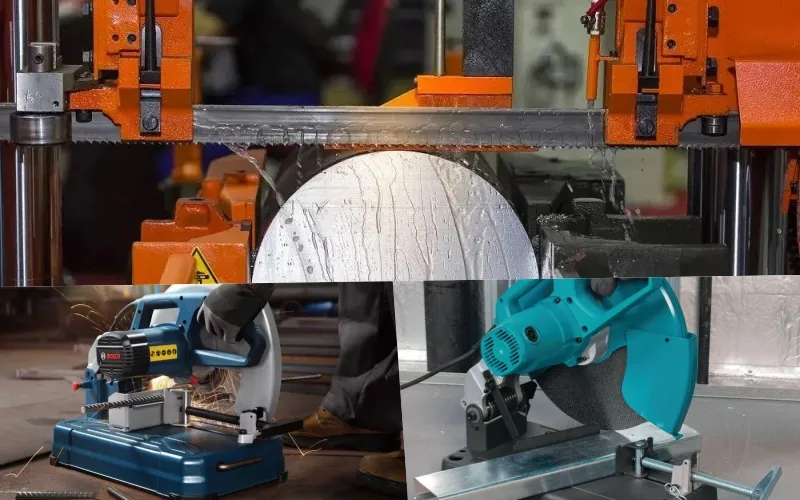
5. Plasma Cutting
Plasma cutting is a versatile method for cutting stainless steel sheets of varying thicknesses (ranging from 3mm to 80mm). It involves using a high-temperature plasma arc to heat and melt through the metal to cut. And it does yield a smoother cut with minimal burr formation than saw cutting. However, you must be careful to keep a steady hand to keep the cut straight.
Additionally, this method can create less heat distortion than other processes like oxy-fuel cutting or laser cutting which results in higher accuracy when creating intricate shapes or designs in metals such as stainless steel or aluminum alloys. Although slightly more costly than flame-cutting due to specialized equipment needs, plasma-cutting is still considered an affordable option for precision metal fabrication.
*When using plasma cutting, we should notice that:
1. Do not place wood on the surface of the stainless steel plate to be cut. When the wood is heated, it will carbonize on the surface of the stainless steel plate and form black marks. These marks are difficult to remove and will lead to the accumulation of carbon on the surface of the stainless steel plate, which can easily cause intergranular corrosion.
2. Plasma cutting will produce spatters that easily adhere to the steel surface and must be removed by grinding.
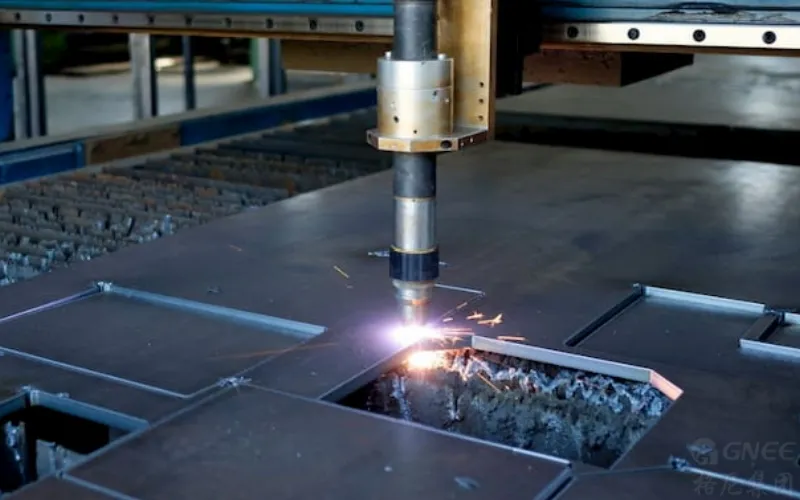
6. Laser Cutting
For projects that require extreme precision and accuracy, such as complex shapes and designs, laser cutting may be the only viable option. The high-energy and infrared-focused laser cutting beams provide a cut width of less than one millimeter or kerf and focus on specific points in the material, which heat up enough to vaporize them without damaging any surrounding areas, making them perfect for intricate designs and patterns. But it also has two sides.
The thermal nature of laser technology limits its capacity to stainless steel plate thicknesses up to 25 millimeters (in some cases even up to 30 or 35 millimeters). Furthermore, laser cutting generates a heat-affected zone (HAZ) at the boundary of the cut. Thermal stress can occur with very complex profiles, at slower cutting speeds, particularly for thin workpieces. Gas-assist technologies have minimized this limitation and help to maintain a clean surface quality. While cut length is limited, substantial cutting area dimensions are available.
On the other hand, laser cutting also produces fewer hazardous fumes than other processes due to its non-contact nature, which helps improve workplace safety significantly compared with other metal fabrication methods, such as oxy-fueling and plasma arc welding (PAW).
In a word, laser cutting is another precise and efficient method for cutting thick stainless steel plates. Though laser cutting is much more expensive than either of those techniques due to its high energy consumption and specialized equipment requirements, many producers typically prefer laser cutting thinner stainless steel sheets as a relatively low-cost and highly efficient approach.
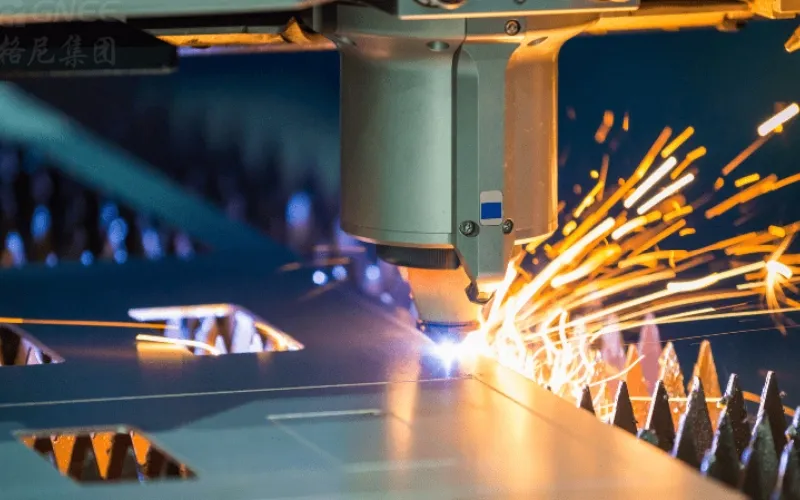
7. Waterjet Cutting
It uses a high-pressure (4000 to 6000 bar) stream of water (or water mixed with abrasive materials) to cut through thick metal plates up to 6-8 inches thick. Usually, the kerf has a width of approximately one millimeter and it produces a smooth and accurate edge.
Waterjet is a non-thermal process, eliminating HAZ and the need for secondary machining for complex profiles. So it is particularly suitable for materials with high heat sensitivity or when precise and intricate cuts are required. Besides, during the waterjet cutting, waterjet speeds can be modulated against edge quality to meet production rate demands.
Therefore, it becomes a significant consideration in some industries, such as aerospace. Similarly to laser cutting, waterjet has little material loss, and long cutting bed sizes (over twelve meters) are very rarely available. It offers value when quality and close manufacturing tolerances are critical, but sheet thickness is out of the range of the laser’s limitations.
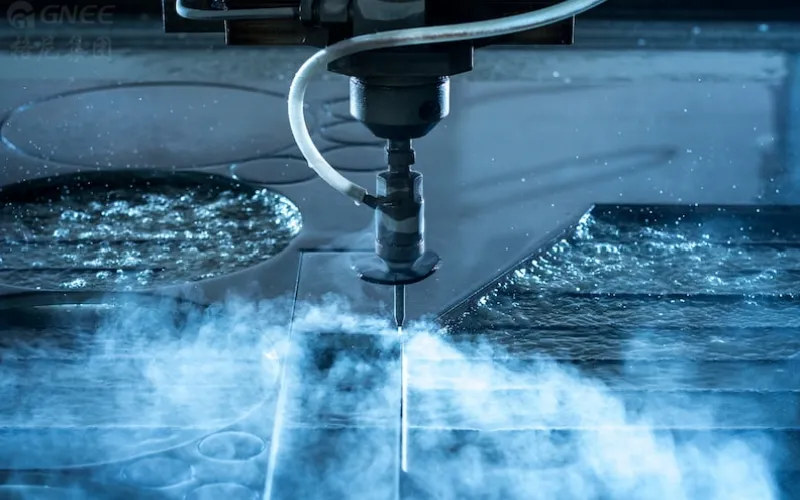
8. Oxy-Fuel Flame Cutting
One common way to cut stainless steel plates is using an oxygen-fueled flame-cutting process. It utilizes a high-powered torch to create a precise cut on the metal surface. This will generate some slag, but the surface is relatively smooth.
Flame cutting is usually more cost-effective than other methods, such as plasma or laser cutting, because it does not require specialized equipment or costly consumables. Furthermore, flame cutting can be used for thicker materials than other processes, making it ideal for heavy-duty projects where precision is still paramount.
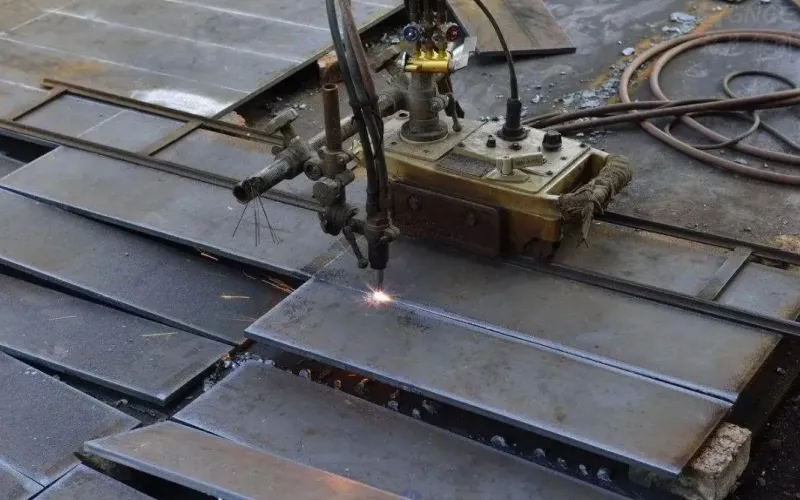
9. Punching Machine
It mainly uses computerized numerical control (CNC) devices, which can use telephone lines to receive cutting data from a computer-aided design (CAD) workstation. This process usually results in flat surfaces, smooth edges, and uniform patterns. This is the main manufacturing process of the perforated stainless steel plate we’ve used today.
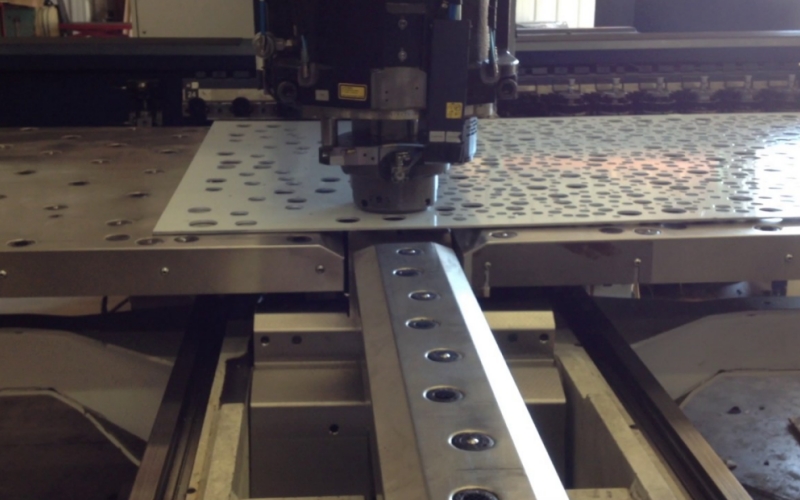
Conclusion
We can find that there are various methods of cutting stainless steel plates used in our daily lives. They are mainly divided into cold cutting and hot cutting. In cold cutting, waterjet cutting or ordinary shearing methods can be used. When using thermal cutting processing, flame cutting, plasma cutting, or laser cutting methods can be used. Different cutting methods can be selected according to the thickness of stainless steel plates. it is also important to prioritize safety, like wearing appropriate protective gear and ensuring the workpiece is securely clamped.
If you need more clarification or experience with cutting stainless steel plates, it is recommended to seek assistance from a professional or experienced metalworker. Welcome to contact our technical team: Whatsapp: +8618437960706.


